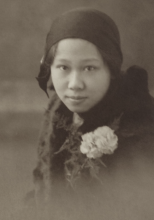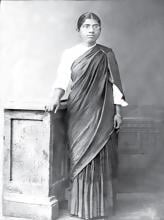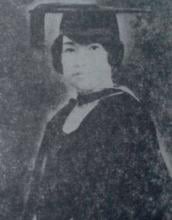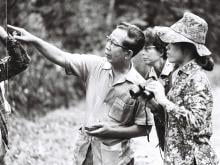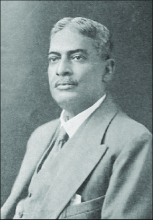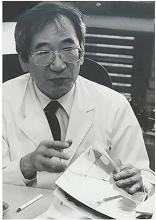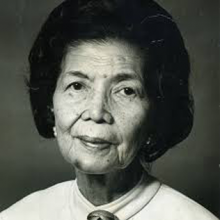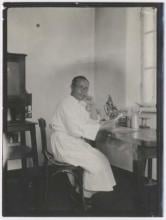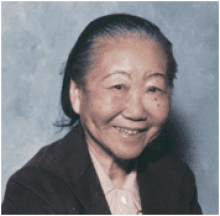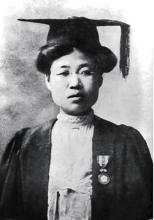Medicine
News

30 Sep 2007
Neanderthals could have spread as far east as central Asia and Siberia. Summaries of newsworthy papers include NO end to protein modification, Micro-managing HIV replication, The long and the short of fatty liver, The gene-mapper’s best friend, Learning in stressful times, HIV stuns immune cells and Mitochondrial downfall in Parkinson’s disease

28 Sep 2007
Keio University receives approval from MEXT for its merger with Kyoritsu University of Pharmacy and establishment of the Faculty of Pharmacy and Graduate School of Pharmaceutical Sciences

28 Sep 2007
Japanese neuroscientists from the RIKEN Brain Science Institute have uncovered a mechanism for an epileptic disorder which occurs in infants. “We hope to develop effective therapies for this intractable epilepsy from further work,” says project leader Kazuhiro Yamakawa.

27 Sep 2007
Early farmers in eastern China used fire and flood control to manage coastal swamps and turn them into the first known rice paddy fields. Summaries of other newsworthy papers include MicroRNAs & metastasis, Effective gene silencing, Processing with superconducting circuits, Lovelock proposes global warming fix, Taking dendritic cells into medicine

26 Sep 2007
Scientists in China have found that measuring potassium by gamma-ray spectroscopy is a cheap and easy way to assess weathering in rocks, which has implications for the construction and geotechnical industry.

23 Sep 2007
Summaries of newsworthy papers include In charge of biosensing, Fountain of youth and Finding co-dependent genes in fission yeast

21 Sep 2007
Multipolar-to-biopolar neuronal transition is essential during brain development. A team of Japanese scientists have determined that a protein called cyclin-dependent kinase 5 (Cdk5) is required for neurons to develop their proper shape.

21 Sep 2007
New research has revealed how protein filaments drive a key cellular process by physically wrapping around and constricting bits of cell membrane

20 Sep 2007
Japanese and American scientists have discovered a bactericidal peptide in M cells that is connected with gut immunity. M cells ingest bacteria or viruses and deliver them to our immune system. This research will help scientists develop a drug delivery system that can deliver medicines specifically to M cells.

20 Sep 2007
Serotonin is used faster in the winter by people suffering from seasonal depression when compared with a control group, according to research to be published in Neurpsychopharmacology this month. The research also shows that serotonin usage returns to normal both where depression is treated effectively and during the summer months.

20 Sep 2007
Summaries of newsworthy papers include Stem cells: Identifying self renewing cells, Climate change: British bog holds clue to ancient global warming and Geochemistry: Argon retention in terrestrial planets

19 Sep 2007
Hydrogen ions produced in very hot water are used in the eco-friendly hydrolysis of cellulose. Other research highlights from Nature China include Gadd45a regulation, Stem-cell transplantation: Cut risks to the bone, Asian dust: Where the dust settles, Quantum dots: Two is not a crowd, Thin films: The stress test

16 Sep 2007
Infectious bursal disease (IBD) also known as Gumboro disease is the second most important poultry disease after Newcastle disease. In this study, we reported for the first time the use of Sybr Green I based real-time PCR to differentiate different strains of IBD virus.

16 Sep 2007
Summaries of newsworthy papers include Biochemical pay dirt in Nature Chemical Biology, Delicate and dynamic immunological equilibrium in Nature Immunology and Many targets – one tube in Nature Methods

15 Sep 2007
Japanese scientists describe crystal structures at the heart of antitumor compound synthesis

15 Sep 2007
A RIKEN-led team of researchers from Japan and the US has used an innovative combination of genome survey techniques in live Drosophila fruit flies to reveal a previously unknown master gene involved in setting circadian rhythms.

12 Sep 2007
One-sixth of the world’s population is affected by tropical diseases, yet the drug ‘pipeline’ for these diseases is almost dry. Other newsworthy papers include Planet survives the red-giant phase, Pinpointing the end of Neanderthals, Two-score ice ages for Mars, Universities and the money fix and Pulsed model for continent growth

12 Sep 2007
Smart surfaces can be switched between water-loving and water-repelling states in response to temperature, pH and glucose changes

09 Sep 2007
In rice-producing Malaysia, rice bran is a rice-milling by-product that is normally considered wasteful. However, researchers at University Putra Malaysia have developed antioxidant neutraceutical formulations from rice bran oil and palm oil.

09 Sep 2007
Summaries of newsworthy papers include Adding a pinch of sugar, Watching protein-cutting enzymes in action, Muscle metabolism and human evolution, The political brain, Dialling up damage responders and Stem cells have nervous impulses

09 Sep 2007
Two researchers from RIKEN’s SPring-8 Center in Harima have demonstrated the conversion of x-rays into longer wavelengths that preserves some of their useful properties, such as high spatial resolution.

05 Sep 2007
Summaries of newsworthy papers include Killer asteroid shower identified, Protein duo make up tip links, Clue to HIV vaccine success, Materials: Tickle me!, SYNERGY sheds light on gene evolution, Symbiotic evolution: Host genes incorporated and finally… Jaws II

02 Sep 2007
Summaries of newsworthy papers include Neurodegeneration: Prion structure unfolds, New drug to treat schizophrenia, Adult stem cell with muscle, The genetics of human height, Stop that itch!, Restraining allergic responses

01 Sep 2007
Neurobiologists from Japan and the US have identified a signaling system functioning during vertebrate development that controls the proper positioning of cells giving rise to future olfactory neurons, and their eventual correct wiring to the brain.

01 Sep 2007
Japanese researchers may have found a simple solution to the problem of keeping human embryonic stem (hES) cells alive after dissociation of the embryo into individual cells.

29 Aug 2007
Warm gas blanket for a baby star, Plants’ contribution to climate change effects, Type 2 diabetes all in the mind?, Volcanoes and the evolution of atmospheric oxygen levels, MicroRNA involved in embryonic patterning, Childhood game lends biodiversity insights, Flies can 'taste' fizzy drinks and The origins of the orchid

29 Aug 2007
Scientists in China have developed a small and robust device for screening genetic mutations, reduced the size of antibodies to effectively target and penetrate solid tumours, and unveiled the process by which pathogens trigger a plant's immune system

26 Aug 2007
Summaries of newsworthy papers include Developmental biology: New method sets stem cells apart, Human embryonic stem cells do a heart good, Shedding light on animals’ interiors

24 Aug 2007
Researchers hold a key to studying cancer, wound healing and development

24 Aug 2007
During the growth and development of organs, proteins act from outside the organs to direct the movements of cells. Researchers at the RIKEN Centre for Developmental Biology in Kobe have identified one such protein that is essential for the development of gonads in the nematode roundworm Caenorhabditis elegans
Researchers
Sorry, no researchers coming up for this topic.
- « first
- ‹ previous
- 1
- 2
- 3
- 4
Giants in history
Michiaki Takahashi (17 February 1928 – 16 December 2013) was a Japanese virologist who developed the first chickenpox vaccine.
Irene Ayako Uchida’s (8 April 1917 – 30 July 2013) strides to understand genetic diseases such as Down syndrome paved the way for early screening of chromosomal abnormalities in foetuses.
Baron Kitasato Shibasaburo (29 January 1856 – 13 June 1931) was a Japanese physician and bacteriologist whose work led to a new understanding of preventing and treating tetanus, diphtheria and anthrax.
Maggie Lim (5 January 1913 – November 1995) was a Singaporean physician who promoted family planning and expanded the access to clinics to improve the quality of life for mothers and children in Singapore’s early days.
By isolating soil microorganisms and studying the compounds they produce, Satoshi Omura (born 1935) discovered almost 500 organic compounds with unique properties that were produced by these microorganisms, including many new antibiotics.
The founder of the Adyar Cancer Institute in India, Muthulakshmi Reddy (30 July 1886 – 22 July 1968), fought to uplift women and girls from impoverished situations.
Chinese-American virologist and molecular biologist Flossie Wong-Staal (27 August 1946 – 8 July 2020) was the first scientist to clone HIV and determine the function of its genes.
Maharani Chakravorty (1937 – 2015) was one of India’s earliest molecular biologists whose research paved the way for advances in the treatment of bacterial and viral infections.
Archana Sharma (16 February 1932 - 14 January 2008) conducted research into plant and human genetics that expanded the understanding of both botany and human health. In relation to botany, she uncovered the means by which asexually-reproducing plants evolve into new species.
The first Thai woman to receive a degree in medicine, Margaret Lin Xavier (29 May 1898 – 6 December 1932), is best remembered for her compassion towards her less privileged patients.
In 1915, pathologist Katsusaburo Yamagiwa and his research assistant Koichi Ichikawa became the first to prove that chronic exposure to chemicals can cause cancer.
In 1915, Koichi Ichikawa along with pathologist Katsusaburo Yamagiwa became the first to prove that chronic exposure to chemicals can cause cancer.
Husband and wife team, Kimishige (3 December 1925 – 6 July 2018) and Teruko Ishizaka (28 September 1926 – 4 June 2019) discovered the antibody class Immunoglobulin E (IgE) that triggers allergic reactions. They also discovered that IgE antibodies attach to white blood cells, known as mast cells, releasing histamine, which causes allergic reactions.
Husband and wife team, Kimishige (3 December 1925 – 6 July 2018) and Teruko Ishizaka (28 September 1926 – 4 June 2019) discovered the antibody class Immunoglobulin E (IgE) that triggers allergic reactions. They also discovered that IgE antibodies attach to white blood cells, known as mast cells, releasing histamine, which causes allergic reactions.
Japanese chemist Takamine Jokichi (3 November 1854 – 22 July 1922) founded the Tokyo Artificial Fertilizer Company, where he isolated a starch-digesting enzyme (named takadiastase) from the fungus Aspergillus oryzae.
Ground-breaking cancer researcher Kamal Jayasing Ranadive (8 November 1917 – 11 April 2001) advanced the understanding of the causes of leukaemia, breast cancer and oesophageal cancer through the use of animal models. She was also among the first to recognise how susceptibility to cancer is linked to tumour-causing interactions between hormones and viruses.
The research of Filipino pharmaceutical chemist Luz Oliveros-Belardo (3 November 1906 – 12 December 1999) focussed on essential oils and other chemicals derived from native Philippine plants.
Thai physician and conservationist Boonsong Lekagul (1907 – 1992) made major contributions to the preservation of his country’s wildlife.
Indian scientist and physician Upendranath Brahmachari (19 December 1873–6 February 1946) is best known for creating a drug called Urea Stibamine, used to safely and reliably treat visceral leishmaniasis (or Kala-azar), a severe infection caused by the Leishmania parasite.
Filipino chemist and pharmacist Manuel A. Zamora (29 March 1870 – 9 July 1929) is best remembered for his discovery of the tiki-tiki formula to combat beriberi, a disease caused by Vitamin B1 deficiency.
Korean parasitologist Seung-Yull Cho (16 November 1943 – 27 January 2019) is remembered largely for his pioneering works to control infections caused by helminthic parasites and his contribution to journal publishing.
Fe Villanueva del Mundo (27 November 1911 – 6 August 2011) was a Filipina paediatrician who founded the Philippines’ first paediatric hospital.
After witnessing death and suffering as a youth in his home village during World War II, Nguyễn Tài Thu (6 April 1931 – 14 February 2021) set his sights on alleviating pain by becoming a doctor. After studying Traditional Chinese Medicine in China in the 1950s, Thu returned to Vietnam to serve in military hospitals. Eventually, he became the country’s foremost practitioner of acupuncture, a technique he first learned by inserting needles into himself.
Minoru Shirota (April 23, 1899 – March 10, 1982) was a Japanese microbiologist who invented the popular fermented drink Yakult.
Wu Lien-teh (10 March 1879 – 21 January 1960) was a Malaysian-born doctor who invented a mask that effectively suppressed disease transmission. Winning the prestigious Queen’s Scholarship enabled Wu to become the first Chinese student to study medicine at the University of Cambridge.
David T. Wong (born 1936) is a Hong Kong-born American neuroscientist who is best known for discovering the antidepressant drug fluoxetine, better known as Prozac.
Indian organic chemist Asima Chatterjee (1917 to 2006) studied the medicinal properties of plant products, especially compounds known as vinca alkaloids.
Chika Kuroda (24 March 1884 – 8 November 1968) was a Japanese chemist whose research focussed on the structures of natural pigments.
Umetaro Suzuki (7 April 1874 – 20 September 1943) was a Japanese scientist best remembered for his research on beriberi, a disease caused by vitamin B1 deficiency, characterized by limb stiffness, paralysis and pain.
Salimuzzaman Siddiqui (19 October 1897 – 14 April 1994) was an artist and chemist from Pakistan whose research focused on natural products from plants.
Barry Paw (29 August 1962 – 28 December 2017) was a biologist and oncologist who discovered several novel genes and their functions in red blood cells.
Syed Qasim Mehdi (13 February 1941 – 28 September 2016) was a Pakistani molecular biologist who was a founding member of the Human Genome Diversity Project (HGDP), which assessed human diversity by studying human migration, mutation rates, relationships between different populations, genes involved in height and selective pressure.
Tsai-Fan Yu (1911 – 2 March 2007) was a Chinese-American physician and researcher who was the first female full professor at Mount Sinai School of Medicine. She discovered that gout, a condition characterized by the painful inflammation of joints, was caused by elevated levels of uric acid in the bloodstream.
Min Chueh Chang (10 October 1908 – 5 June 1991) was a Chinese-American biologist who studied fertilization in mammalian reproduction.
A Japanese surgeon, Tetsuzo Akutsu (20 August 1922 – 9 August 2007) built the first artificial heart capable of keeping an animal alive.
Ogino Ginko (3 March 1851 – 23 June 1913) was the first registered female doctor to practise modern medicine in Japan.
Esther Park (1877-1910), born Kim Jeom-dong, was the first female Korean physician to practise modern medicine in Korea and trained the first generation of Korean female doctors.





